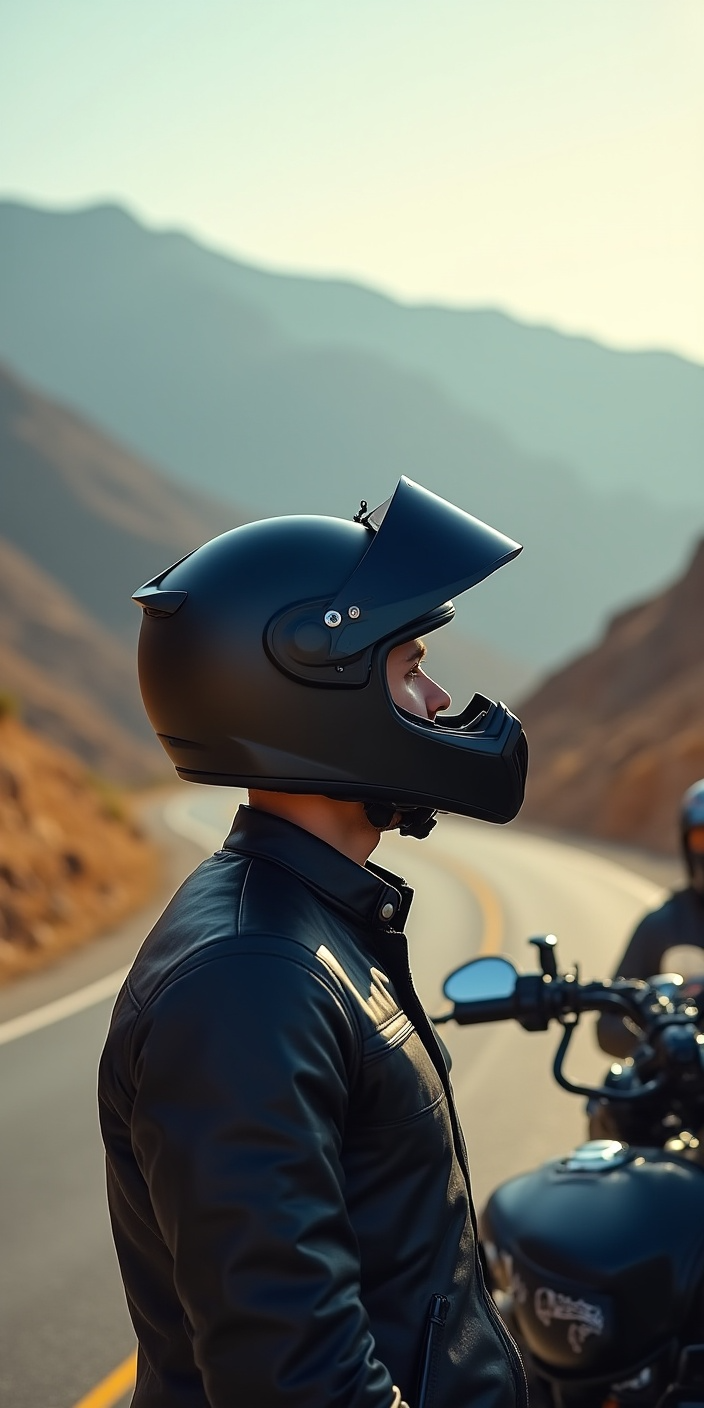Long rides are the heart of the Indian motorcycling experience, whether you’re tackling Ladakh’s passes or cruising coastal highways. However, many riders report neck and shoulder aches after a day in the saddle. Is helmet weight the real culprit? Let’s turn to science with a close look at the latest helmet weight neck strain study insights, alongside practical strategies for a pain-free tour.
Why Does Helmet Weight Matter?
When riding, your neck supports not only your head (already around 4-5kg) but also the weight of your helmet, often an extra 1.2-2kg. Studies show even small increases can cause significant muscle fatigue and discomfort, especially over long distances and hours in the saddle.
A 2021 helmet weight neck strain study reviewed via PubMed Central (PMC) concluded that even minimal increases in helmet weight contribute to local neck muscle fatigue. Notably, this fatigue can negatively impact both physical comfort and rider focus, two critical factors in long-distance touring.
What the Research Says: Neck Fatigue and Indian Riders
- Electromyography (EMG) testing shows that helmet weight directly increases the workload on neck muscles. The heavier the helmet, the earlier the onset of muscle fatigue, and the higher the risk of discomfort or strain-related issues.
- Biomechanics studies highlight that full-face and multifunction helmets, whilst extremely protective, can raise wind resistance and overall neck load.
Helmet design, fit, suspension, and aerodynamics all play a role, but weight remains a decisive risk factor for discomfort and even long-term musculoskeletal issues for Indian riders clocking hundreds of kilometres a week.
Lightweight Helmets for Long Tours: The Clear Advantage
Modern materials now enable lighter, yet highly protective helmets, specifically engineered to reduce neck fatigue. Experienced Indian riders and experts recommend:
- Fibreglass, carbon fibre, or advanced polycarbonate shells as opposed to heavy ABS or steel types.
- Well-balanced helmets with weight distribution close to the head’s centre of gravity, reducing strain from side-to-side motion.
Lighter helmets mean less resistance to wind buffeting, a key reason for pain and tension on exposed highways.
Browse ReiseMoto’s collection of lightweight touring helmets for options popular among Indian tourers, including ECE and ISI-certified choices below 1.4kg, designed for all-day comfort.
Neck Fatigue Prevention Strategies for Long Rides
Minimising neck pain is not just about helmet choice. Apply these neck fatigue prevention strategies for a restful ride:
- Perfect Helmet Fit and Ergonomics
A helmet that moves or rattles increases muscle fatigue. Choose the right size and properly adjust the chin strap, ensuring the helmet sits level and snug for your head shape.
- Take Regular Breaks
Every 60-90 minutes, stop to stretch your neck, shoulder, and upper back muscles. This simple act can prevent cumulative fatigue.
- Build Neck Strength
Regularly perform basic neck stretches and strengthening exercises. A strong neck resists fatigue better and reduces injury risk.
- Improve Your Riding Posture
Keeping your head aligned over your spine, relaxing your shoulders, and avoiding “forward head” posture significantly lessens neck stress.
- Select Aerodynamically Designed Helmets
Streamlined shells reduce wind resistance, a big contributor to touring discomfort. Many modern lids at ReiseMoto focus on both weight and shape for reduced fatigue.
- Use Touring Accessories
Consider windshields, collar supports, or adjustable handlebar risers to lessen the impact on your neck, especially for upright, adventure-style motorcycles.
Helmet Ergonomics for Touring: What Should Indian Riders Look For?
When selecting your next lid, compare the following key features:
|
Feature |
Why It Matters for Neck Fatigue |
|
Shell Weight |
Lighter is better for endurance |
|
Balance/Aerodynamics |
Reduces wind-induced drag and tipping |
|
Fit/Shape |
Snug, no wobble, matches your head contour |
|
Padding/Support |
Absorbs vibration, improves comfort |
|
Ventilation |
Reduces heat, which can worsen muscle fatigue |
|
Certification |
Minimum ISI or ECE certification for safe travel |
Explore ReiseMoto’s helmet resource guides for deeper head-to-head comparisons and touring gear tips.
A growing body of research confirms what many Indian riders already suspect: helmet weight directly impacts neck fatigue and overall comfort during extended touring. Opting for modern, lightweight helmets, prioritising ergonomic fit, and following smart neck fatigue prevention strategies can keep your long rides enjoyable and ache-free.
For more practical touring advice and helmet reviews tailored for Indian conditions, visit the ReiseMoto Blog. For data sources or to explore the original studies on helmet weight and neck pain, see this recent clinical review on helmet fatigue and neck strain.
Ride light, ride smart, your neck will thank you after every mile.
Frequently Asked Questions: Helmet Weight & Neck Fatigue
-
Does a few hundred grams really matter in helmet weight?
Yes. Even a difference of 300-400g, after four or more hours’ riding, leads to much higher muscle exhaustion according to recent studies.
-
Are modular helmets always heavier?
Flip-up or modular helmets often weigh more due to their hinges and hardware, making lightweight full-face lids preferable for long rides.
-
Is neck pain always due to helmet weight?
Not exclusively. Poor riding posture, unsupportive seats, high-speed wind buffeting, and incorrect bike ergonomics all add to the problem. However, helmet weight is a key modifiable factor.
-Team Reisemoto

